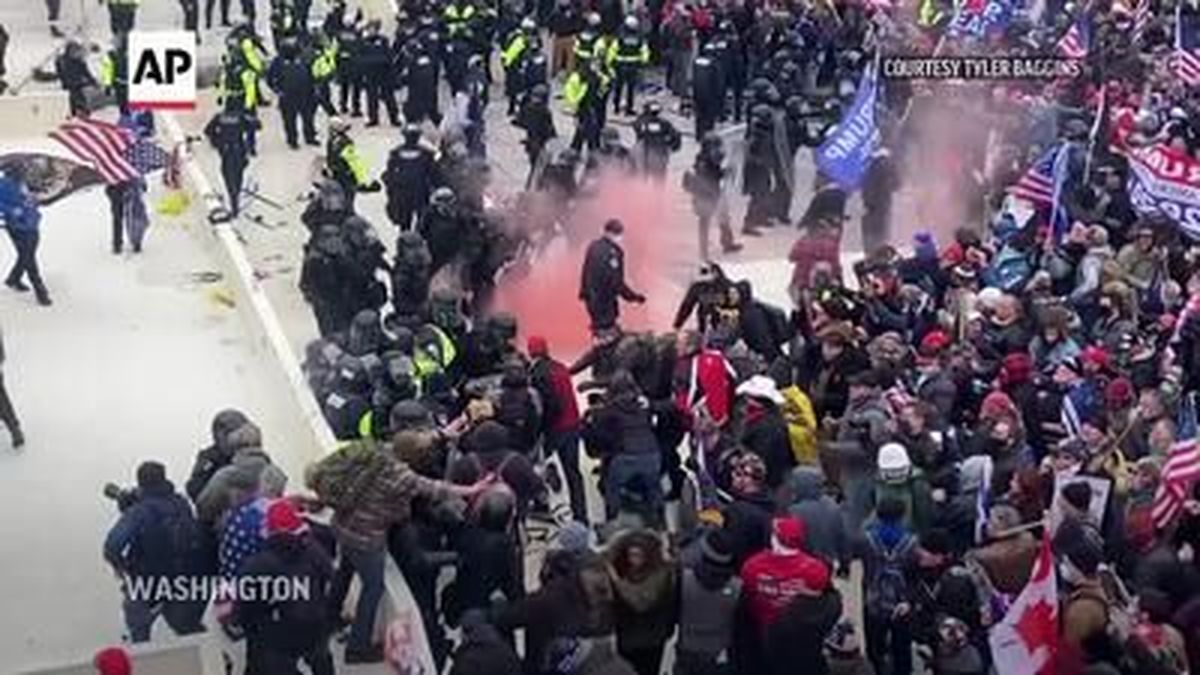Spokane attorney and former capitol police officer Richard Eymann says it’s ‘unfathomable’ that mob easily pushed past security

When Richard Eymann, a Spokane attorney and former U.S. Capitol Police officer, saw the news that a mob swept past police and stormed the U.S. Capitol, he was shocked – not necessarily by the presence of the mob itself, but at the ease with which they were able to force their way into the capitol and loot the center of American Democracy.
Eymann was a capitol police officer from around 1965 to 1967, leaving several months after he was injured on the job. He said during his short tenure, the Capitol police force was about a tenth of the size it is now, and protests and demonstrations were usually blocked off a few blocks from the Capitol, especially if the police knew they could be large or get out of hand. He said when he’s visited the capitol over the years since then, that practice has been the norm as well.
When he was an officer, backup was usually available from both the National Guard and the Washington, D.C. Police Department.
“Even back then, if we knew a demonstration was going to occur, we were stationed two blocks down the hill,” he said. “People weren’t allowed to get near the Capitol building. Yesterday, it was amazing to me, what was forecast, with (President Donald) Trump saying, ‘We’re all going to march to the Capitol building.‘ it’s unfathomable to me that they were able to get within two or three blocks.”
Eymann recalls a time when police were overwhelmed and officers, including himself, were injured.
He said when he was an officer, anti-Vietnam war protesters regularly demonstrated at the Capitol, and those demonstrations turned violent several times.
- He said during the summer of 1967, he worked almost every day and at one protest, far more people than expected showed up and aggressively tried to push through officers. He said during that protest, a superior officer ordered him to stop a woman from writing an expletive on the wall with lipstick. When he approached her, he saw blood splatter and a few moments later, realized it was his own. He found out later that the woman had pulled out a razer blade and slashed his wrist, severing a tendon. He returned to work after recovering from surgery.
Eymann said he didn’t recall if the woman was ever convicted for assault, and decided against a career in law enforcement later that year. He is now an attorney in Spokane who has represented hundreds of people known as “downwinders” who have cancer and other health complications they received from being exposed to radioactivity during the Cold War.
Eymann noted that the Capitol police had warnings that the protest could get large and unruly, and according to ProPublica, a nonprofit newsroom, some demonstrators publicly planned to “occupy” the Capitol on social media before the event.
“All of this is not new to the Capitol Police force,” Eymann said. “Yesterday I was very shocked they were able to get into the building, and then on to the Senate floor and the House floor. That’s sacred territory.”
During Wednesday’s riot, one woman was shot and one Capitol police officer died from injuries after he was reportedly struck with a fire extinguisher while engaging with the mob. Around 50 Capitol police officers were injured. Several pipe bombs were also found around the Capitol Wednesday, and photos of the riot show people breaking glass, spraying chemical irritants and carrying zip ties into the Capitol building.
Since the riot, the United States Capitol Police have come under fire, as well as the Sergeant-of-Arms for both the House and Senate. Three days before Trump supporters rioted, the Associated Press reported that the Pentagon asked if the Capitol Police needed the National Guard, and they declined. As the mob descended on the Capitol, the Justice Department asked if the Capitol Police needed FBI agents, and they reportedly declined.
Under pressure from congressional leaders, U.S. Capitol Police Chief Steven Sund has since resigned and, according to the Associated Press, both the House Sergeant-of-Arms and the Senate Sergeant-of-Arms have resigned.